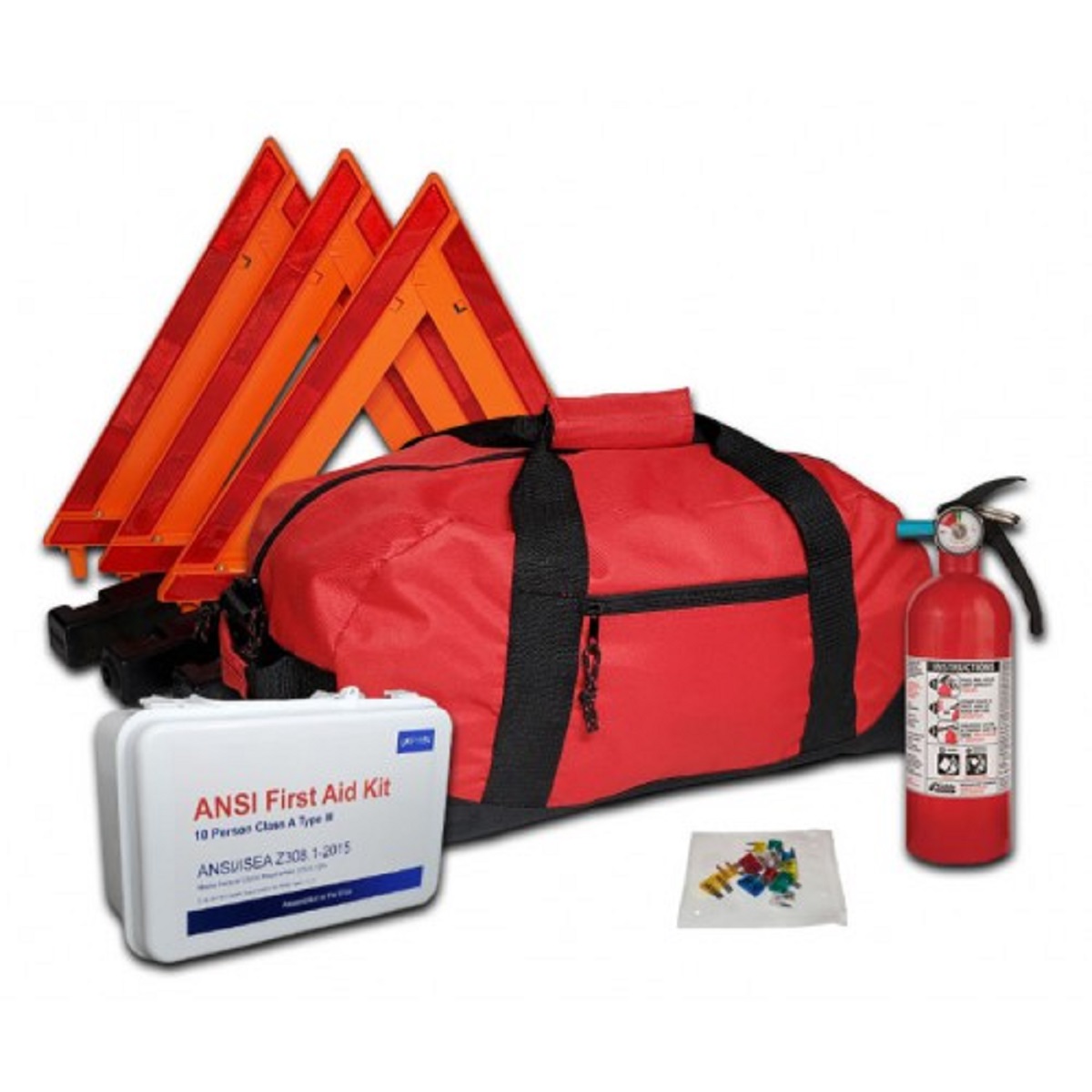Truckers Guide to Essential Emergency Equipment
Everyone has been on a road at some point in their life.
They are an essential and unavoidable part of everyday life. Because roads are used so frequently by so many people, accidents are bound to happen. In order to ensure that drivers, passengers, pedestrians and everyone else on the roads are kept safe, regulatory authorities have established strict guidelines regarding the emergency equipment that CMVs (Commercial Motor Vehicles) must carry. These regulations are in place to address various emergency situations that drivers may encounter while on the road.
Below is a comprehensive list of all of the emergency equipment that CMVs are required to have on hand:
Fire Extinguishers
One of the most critical pieces of emergency equipment that CMVs must carry is a fire extinguisher. They are essential for putting out small fires that may occur in the vehicle’s engine compartment, cabin, or cargo area.
According to 49 CFR 393.95 The Federal Motor Carrier Safety Administration (FMCSA) requires all CMVs to carry fire extinguishers that have an Underwriters’ Laboratories rating of 5 B:C or more two fire extinguishers that have an Underwriters’ Laboratories rating of 4 B:C or more.
In addition to the above rule, any CMVs that are used to transport hazardous materials in a quantity that requires placarding must be equipped with a fire extinguisher that has an Underwriters’ Laboratories rating of 10 B:C or more.
All fire extinguishers must also be properly maintained, labeled and mounted somewhere in your vehicle that is easily accessible.
Spare Fuses and Bulbs
Malfunctioning lights and electrical systems can be extremely dangerous, especially at night or during storms. CMVs are required to carry at least one spare fuse for each type/size of fuse or bulb needed for all parts and accessories to quickly replace any faulty components, ensuring that all lights, including headlights, taillights, and turn signals, are functional.
Spare Tires and Tools
Flat tires can occur at any time. Having spare tires and the necessary tools to change them is essential for CMV operators. Regulations require CMVs to have at least one spare tire and the tools needed for tire changes. Drivers are also highly encouraged to maintain proper care of their tires.
Warning Triangles and Flares
Warning triangles and flares are used to signal other drivers and emergency responders when a CMV is parked on the side of the road due to a breakdown or accident. They help improve visibility and reduce the risk of collisions. CMVs have several options for warning devices:
- Three bidirectional emergency reflective triangles that conform to the requirements of Federal Motor Vehicle Safety Standard No. 125, § 571.125.
- At least 6 fusees or 3 liquid-burning flares. The vehicle must have as many additional fusees or liquid-burning flares as are necessary to satisfy the requirements of § 392.22.
- Other warning devices may be used in addition to, but not in lieu of, the required warning devices, provided those warning devices do not decrease the effectiveness of the required warning devices.
First Aid Kits
First aid kits are essential for providing immediate medical assistance in the event of an accident or injury. CMVs are required to carry adequately stocked first aid kits that include items like bandages, antiseptic wipes, adhesive tape, scissors, and gloves. Having a fully stocked first aid kit could be crucial for addressing minor injuries and stabilizing a person’s condition until professional medical help arrives.
Emergency Reflective Vests
While emergency reflective vests are not required by 49 CFR 393.95, it is highly recommended to carry them. They are worn by CMV operators when they need to exit the vehicle on the side of the road. These vests improve visibility, especially during low-light conditions or inclement weather. They help ensure that CMV personnel are easily spotted by passing drivers and emergency responders.
Being Prepared is Better for Everyone
Safety on the road is incredibly important, especially when it comes to commercial motor vehicles. By carrying the required emergency equipment CMV operators are better prepared to handle emergencies and reduce the risk of accidents on our highways and roads . Adhering to these regulations not only ensures compliance with the law but also contributes to safer roads and highways for everyone.
Related Articles:


